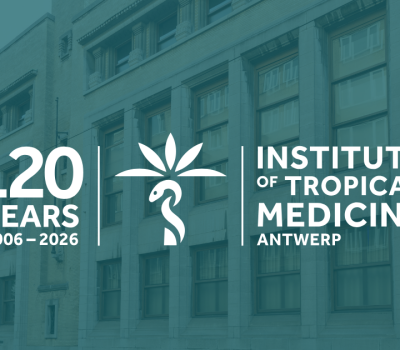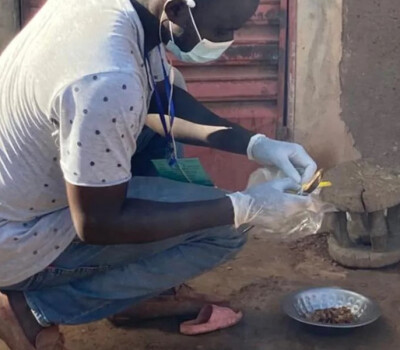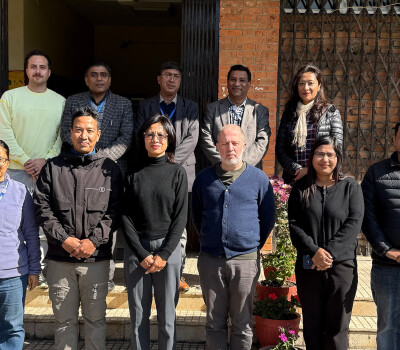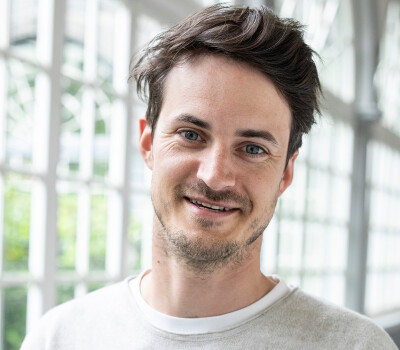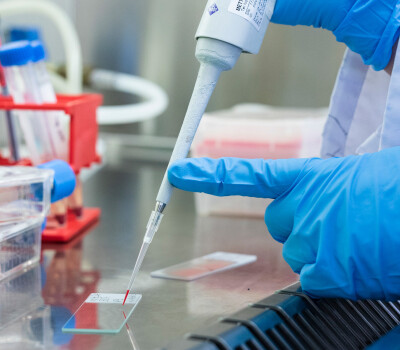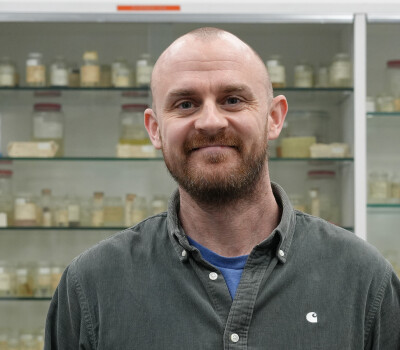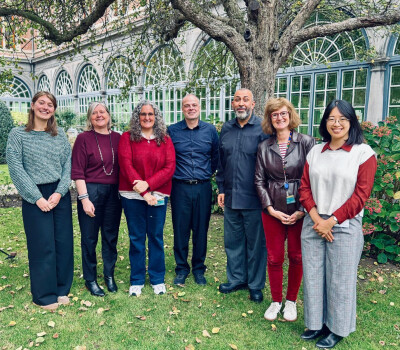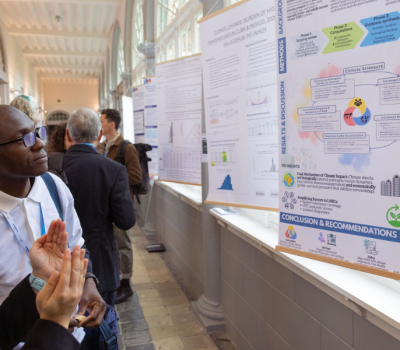ITM and Damien Foundation launch new study to prevent leprosy

The island of Anjouan in Comoros, an archipelago in the Indian Ocean, has an annual incidence of 7.4 leprosy cases per 10,000 inhabitants – 24 times higher than the global average. As a follow-up to the PEOPLE study, which examined the effect of preventive treatment (a single dose of rifampicin as “post-exposure prophylaxis” (PEP)) in 110,000 people, ITM, Damien Foundation and Janssen Pharmaceutica are now starting the BE-PEOPLE study. In this new study, the combination of bedaquiline with rifampicin will be tested as prophylaxis for leprosy. Currently bedaquiline is successfully used to treat multi-drug-resistant tuberculosis. Importantly, the bacilli causing leprosy and tuberculosis are closely related thus making it possible to consider bedaquiline for use in leprosy patients.
For four years, persons living in villages with high rates of leprosy will be invited for annual skin examination for lesions suspicious of leprosy, in which case they will receive curative treatment. Contacts who do not have leprosy, yet have been exposed to leprosy patients, will be offered PEP to lower their risk of developing leprosy themselves. In some villages, PEP based on a single dose rifampicin will be offered as recommended by the World Health Organization (WHO) while in other villages rifampicin will be combined with a single dose of bedaquiline. The first study is a phase 2 clinical trial involving a group of 300 people who will be closely monitored for side effects. If no safety concerns emerge, the study will proceed to phase 3, and will be rolled out to over 124,000 people in the Comoros.
Since 2018, ITM and Damien Foundation have been conducting research into the high incidence of leprosy in Comoros through the EDCTP2-funded PEOPLE study, which examined the effect of PEP based on rifampicin only given to close contacts of leprosy patients. The study is still ongoing but preliminary results do not show the major decrease in numbers of new leprosy cases we had hoped for. And this while in 2018 WHO put PEP with rifampicin forward as the way to eradicate leprosy within 20 years. These events propelled the partners to look for other options for post-exposure prophylaxis of leprosy.
Professor Epco Hasker, Head of ITM’s Unit of Mycobacterial Diseases and Neglected Tropical Diseases, says, “First of all we hope to see a sharp decline in the number of new leprosy patients among those who received the bedaquiline enhanced PEP regimen. On top of that we also hope to see an impact on transmission of leprosy at village level, which may take longer to demonstrate, as leprosy has a very long incubation period. If the new PEP regimen proves effective in Comoros, it can become the key to elimination of leprosy in other pockets of high endemicity. The leprosy scientific community is keenly watching the outcomes of this trial.”
The study is led by ITM and Damien Foundation and its partner, the National Leprosy and Tuberculosis Control Programme in the Comoros, and funded by Janssen Pharmaceutica, who also generously provide the study compound bedaquiline. Other partners include Leiden University Medical Center (LUMC) and the Netherlands Heart Institute in Amsterdam.
Fighting leprosy on all fronts
In 2021, ITM and Damien Foundation have also started another follow-up study called Social Network Analysis of Leprosy, financed by the Department of Economy, Science and Innovation of the Flemish Government (EWI). This study complements the data emerging from the PEOPLE study with the analysis of social networks. Here, social scientists study entire villages combining qualitative and quantitative research methods. By understanding how transmission of leprosy occurs, researchers will know who benefits most from leprosy screening and PEP within the patient's social network - beyond those living nearest. They will be able to formulate concrete recommendations to improve leprosy prevention and control efforts in Comoros, and more generalizable recommendations that could benefit leprosy interventions globally.
Damien Foundation
“The BE-PEOPLE trial brings hope for persons at risk of developing leprosy in Comoros, especially in Anjouan where having leprosy has been perceived as part of life because it is extremely frequent. Among those suffering most are children who represent a third of people affected by leprosy that can be protected and hopefully never develop leprosy,” says Dr Nimer Ortuño-Gutiérrez, Research Coordinator at the Damien Foundation.
Janssen Pharmaceutica
“Leprosy has impacted communities for thousands of years, yet eradication has remained out of reach. The BE-PEOPLE trial offers a new step forward to explore the potential of new tools to identify a potentially shorter and more effective regimen, offering communities impacted by leprosy new hope for the future.” Ruxandra Dragha-Akli, MD PhD, Global Head, Global Public Health R&D, Janssen Research & Development, LLC.
What is leprosy?
Leprosy or Hansen’s disease is a bacterial infection caused by a bacillus called Mycobacterium leprae. It is transmitted through the respiratory tract by droplets that are released during coughing or sneezing, which quickly stops when patients receive treatment. Every year still more than 210,000 new leprosy patients are diagnosed worldwide, especially in low- and middle-income countries, while more patients go undiagnosed. Leprosy is not fatal, but causes disfigurements for life. Symptoms often start with loss of feeling in hands and feet, leading to wounds, infections and deformities. Blindness is also a common complication. The disease has a great impact on the mental wellbeing of the patients and their families. They face discrimination and exclusion, and therefore often fear the diagnosis. The leprosy bacillus was discovered in 1873 in Norway. Even though leprosy had all but disappeared from Norway by 1920, more than a century later other countries are still struggling to control the disease.
Spread the word! Share this story on
